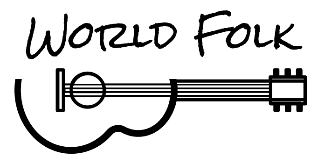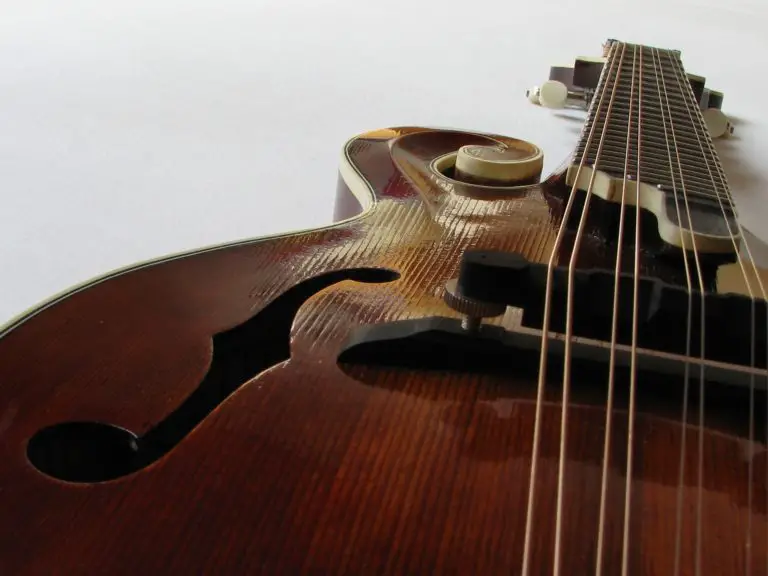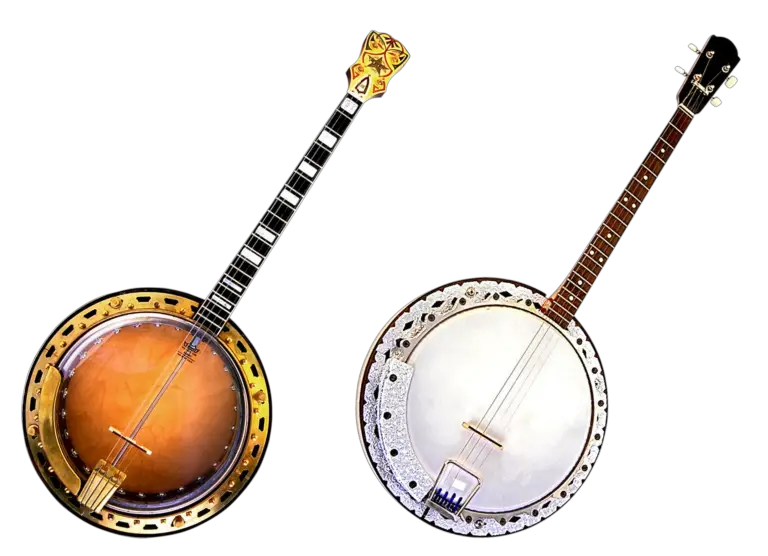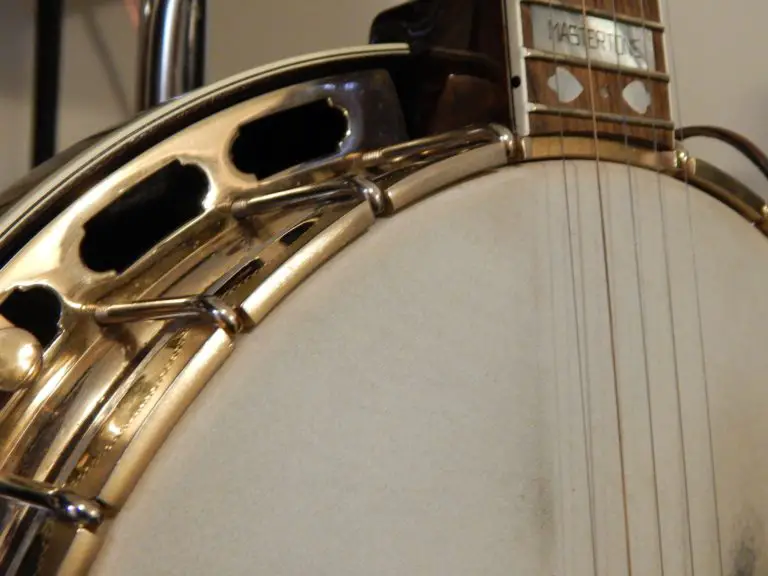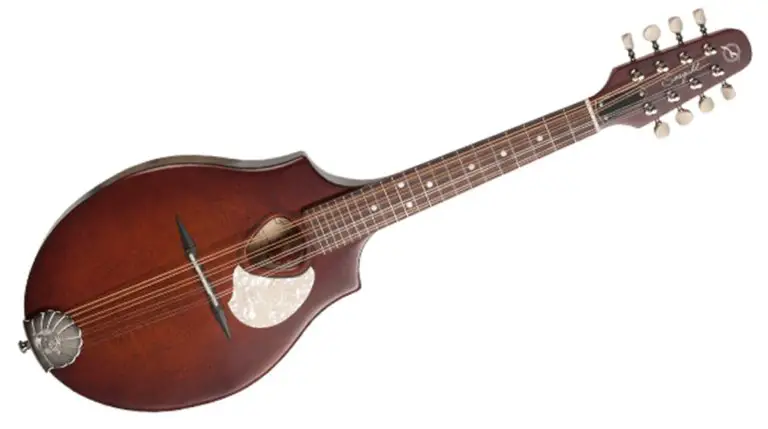Top 5 Best Cheap Banjos
The banjo is one of the most iconic sounds in American music. From bluegrass to old-time to folk, the banjo can brighten up just about any song. Old-timers used to send away for a cheap banjo from a mail-order catalogs. The times may have changed, but one thing hasn’t: there are a ton of great cheap banjos just waiting for you to pick them up and play them.
Whether you’re a beginner or an expert, you don’t have spend a lot to sound like you did. Here’s our guide to the best cheap banjos that certainly don’t sound or feel like, well, a cheap banjo!
Gold Tone AC-1
Summary: A lightweight, inexpensive banjo perfect for beginners
Best for: Anyone who wants a lighter banjo at a very light price
Gold Tone is one of the gold standards when it comes to making quality affordable banjos. Like many brands, they build their budget banjos overseas. But unlike other brands, Gold Tone sets them up in a shop in Florida, meaning that the banjo has been checked over by an expert before getting into your hands. This helps avoid some of the major problems associated with cheap banjos like intonation, action, and playability.
The Gold Tone AC-1 banjo gets its name from the “Acoustic Composite” its body is made of. The composite is a molded material that feels quite sturdy and will withstand the elements better than wood. It’s also very lightweight. The AC-1 weighs less than 4 pounds, which makes it a great choice for anyone who finds other banjos too heavy.
One striking feature of the Gold Tone AC-1 is the slim neck, making it a very playable banjo. That plus the light weight make this a perfect banjo for beginners or as a travel instrument. The zero glide nut and intonated bridge both help keep the intonation more or less perfect up the neck.
The AC-1 is a little quieter than the average banjo, with a more rounded, less punchy tone. Most of Gold Tone’s pricier options like the Cripple Creek Series include a tone ring, which helps with both projection and tone. Still, the AC-1 holds its own quite nicely, and at a much lower price point. Quieter may even be a bonus for those who want to practice without disturbing anyone. Overall, it’s a fantastic budget banjo from a company with a very good reputation.
Pros
- Lightweight
- Great value
Cons
- Quieter, less punchy tone
Deering Goodtime Open Back Banjo
Summary: A classic beginner’s banjo perfect for clawhammer
Best for: Anyone looking for a no-frills banjo from a big-name brand
Deering’s Goodtime Series is legendary when it comes to inexpensive banjos. Made in the US at the same workshop that makes Deering’s high-end lines, Goodtime banjos have been one of the best beginner banjos out there for a long time. They prove that a cheap banjo doesn’t have to feel or sound cheap.

While it’s not quite as lightweight as the AC-1, the Goodtime banjo is still very light. It’s made almost entirely of maple, with a steel hoop and a steel coordinator rod to make neck adjustments. It feels very well-built and comfortable. Intonation is very good up and down the neck, as is action and playability.
Again, because of its lighter weight construction and lack of a tone ring, the Goodtime banjo is a little quieter and less punchy than other banjos. It’s a fantastic clawhammer banjo, with a plunky, rounder sound than works well for old-time music. Deering has given this and other Goodtime banjos a classic, traditional look that still manages to be unique.
One issue to keep in mind is that the Goodtime banjo lacks a fretboard. Instead, the frets are installed directly into the maple neck. This helps cut down on cost and complexity, but some players have found that the maple starts wearing after years of playing. Without being able to replace the fretboard, eventually this creates divots between the frets. However, that’s after years and years of playing. Otherwise, the Goodtime banjo is definitely built to last.
Pros
- Light weight
- Classic look and sound
Cons
- No separate fretboard means that neck wear is harder to fix
Ibanez B200
Summary: A resonator banjo at an open-back price
Best for: Someone who wants an affordable bluegrass banjo
The first thing you’ll nnotice about the Ibanez B200 is that it has a resonator on the back. Most cheap banjos are open back, which is great for folk and old-time, but less so for bluegrass. The resonator really projects the tone of the banjo, and the B200 is one loud banjo! If you’re looking for a cheap resonator banjo, the B200 is one of the best options on the market today.
The Ibanez B200 has a few other nice touches not normally found on a cheap banjo. Most apparent are the beautiful inlays on the neck and headstock. There’s also a nice design etched into the metal armrest. Sure, they don’t necessarily make it sound better, but they look pretty cool!
More to the point tone-wise, it features a tone ring, which sits just under the head around the rim. This helps improve the punch, clarity, and volume of the banjo. Banjos with tone rings are usually preferred by bluegrass players for the bright, ringing sound they help produce. The Ibanez B200 is a great cheap banjo for those looking to get into bluegrass picking.

That tone ring, along with the resonator, makes the Ibanez B200 a very heavy banjo. This may make it awkward for some people to hold, and a strap is very much recommended. If you’re planning on traveling with your banjo, or just want to make it lighter, you can always take the resonator off. In fact, the B200 is a great banjo for tinkering, since most of the parts are easily removable/replaceable. You can upgrade certain components as you go to create your perfect banjo.
Pros
- Cheap price for a resonator banjo
- Easily customizable
Cons
- Very heavy, especially with resonator on
Oscar Schmidt OB5
Summary: A great value choice with a customizable sound
Best for: A beginner who wants to try out multiple styles
Oscar Schmidt has been making banjos for over 100 years, and has always been a trusted brand for string instruments. Their OB5 model is a remarkable bargain for a resonator banjo, and along with the Ibanez B200 is a great choice for anyone who wants to try out some bluegrass-style picking.
Unlike the Ibanez B200, the Oscar Schmidt OB5 doesn’t have a tone ring, but it still puts out a wonderful, bright tone. Part of this is due to the 30 brackets around the rim, more than the usual 16-24 you’ll find on most cheap banjos. More brackets means that the tension across the head is more even, improving tone and projection.
With the resonator on, this is a loud, ringing banjo. But without the resonator, as you can see from the video review below, it turns into a mellow, plunky banjo, perfect for clawhammer. While it’s recommended for any bluegrass beginners, this is also a good banjo to experiment on if you’re not sure which style suits you best.

It’s not as heavy as the Ibanez B200 with the resonator on, and is surprisingly light as an open back banjo. If you’re planning on traveling, popping the back off makes the OB5 a good travel banjo. Overall, it’s a very flexible instrument that will suit any beginner.
Pros
- Easily removable resonator
- Wide range of tone possible
Cons
- Not quite as loud or bright as Ibanez B200
Recording King RKOH-05 Dirty Thirties Open Back Banjo
Summary: A vintage look and build that sounds like a classic old-time banjo
Best for: Someone looking for a cheap modern version of a pre-war banjo
As the name suggests, the Recording King Dirty Thirties line throws back to some of the classic instruments of the pre-war era. These are the instruments that people bought from mail-order catalogs, shipped to the mountain hollers and rural farms around the US. They ended up on countless blues and old-time archival recordings thanks to the working-class musicians who bought them.
In essence, the Recording King Dirty Thirties open back banjo is a replica of a cheap banjo from the 1930s, with some modern upgrades. One of those is a truss rod to help adjust the action and keep the neck straight. Another big upgrade is in the geared, guitar-style tuners, which work much better than the cheap friction pegs of old.
Still, the Dirty Thirties open back has a classic look and sound that immediately brings to mind scratchy old clawhammer field recordings. The plunky, mellow tone of the Dirty Thirties banjo suits old-time playing very well. It’s less punchy and ringing than bluegrass players might like, but Recording King also has a resonator version better suited to Scruggs-style, the Dirty Thirties RKH-05.
Like the banjos it’s inspired by, the Dirty Thirties open back is built tough, and would make a great travel banjo. The maple neck and multi-ply rim are quite sturdy, and the nickel-plated hardware resists corrosion. Remember, it’s modeled after banjos that had to survive the heat and humidity of the South as well as cold, dry mountain air. Recording King has done its best to make sure these will last as long as their predecessors.
Pros
- Very sturdy construction
- Vintage look and sound
Cons
- Not as well suited to bluegrass picking
